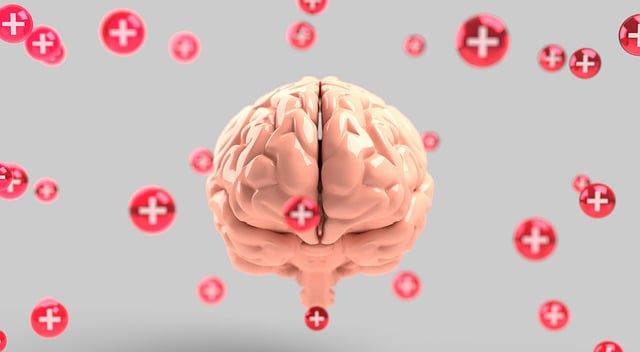Superior Domestic Violence Therapy employs comprehensive risk assessment and harm minimization planning to address complex abusive relationships. By analyzing behaviors, therapists predict risks, foster empathy, and tailor interventions like safety planning and self-esteem improvement. Integrating evidence-based practices for depression prevention and stress management empowers clients with mental health coping mechanisms. Well-designed plans, monitored through regular sessions, guide individuals through risk management, healing, and recovery while preventing therapist burnout.
Risk assessment and harm minimization planning are essential components of superior domestic violence therapy. By understanding the intricacies of risk assessment, therapists can identify potential hazards and develop targeted strategies to protect clients. This article delves into critical aspects such as evaluating risks, implementing effective harm minimization tactics, and crafting comprehensive safety plans. Through these key steps, therapists enhance their ability to provide safe interventions, monitor outcomes, and ultimately support victims on their path to healing.
- Understanding Risk Assessment in Domestic Violence Therapy
- Identifying Harm Minimization Strategies
- Creating a Comprehensive Plan for Safe Interventions
- Implementing and Monitoring the Effectiveness of Harm Minimization Plans
Understanding Risk Assessment in Domestic Violence Therapy

In the realm of Superior Domestic Violence Therapy, risk assessment is a crucial component that helps mental health professionals navigate the intricate landscape of abusive relationships. It involves a meticulous analysis of various factors, including past and present behaviors, to predict potential risks and harm to clients and their children. This process goes beyond merely identifying dangers; it’s about understanding the dynamics of domestic violence, fostering empathy, and tailoring interventions accordingly. By integrating compassion cultivation practices, therapists can create a safe space for clients to share their experiences without fear or judgment, thereby enhancing trust and encouraging disclosure.
Comprehensive risk assessment for mental health professionals is not just a tool but a responsibility. It equips them with the knowledge to implement effective harm minimization strategies, such as safety planning, while also fostering resilience among clients. Moreover, addressing risk assessment in domestic violence therapy can help prevent burnout, a common challenge in this emotionally demanding field. Through continuous training and self-care practices, professionals can stay equipped to offer superior support, ensuring that clients and their families receive the compassionate and tailored care they deserve.
Identifying Harm Minimization Strategies

Identifying Harm Minimization Strategies is a critical step in effective risk assessment and planning for superior domestic violence therapy. This process involves recognizing and addressing immediate dangers while also focusing on long-term solutions. Therapists should work collaboratively with clients to develop tailored strategies that cater to individual needs, ensuring safety and well-being. By integrating Self-Esteem Improvement techniques into the therapeutic framework, individuals can gain resilience against abusive situations, fostering a sense of empowerment.
Additionally, addressing Depression Prevention and Stress Management is paramount. Recognizing the emotional and psychological toll of domestic violence, therapists can employ evidence-based practices to mitigate these effects. This includes cognitive-behavioral therapy, mindfulness exercises, and other tools that promote mental health and coping mechanisms, ultimately helping individuals break free from destructive patterns and build a safer future for themselves and their families.
Creating a Comprehensive Plan for Safe Interventions

When addressing domestic violence, a comprehensive harm minimization plan is essential for ensuring the safety and well-being of all involved. This involves creating a tailored strategy that considers the unique circumstances and needs of each individual and family. A superior domestic violence therapy approach recognizes that every situation is distinct, requiring a flexible yet structured intervention plan. By incorporating elements of stress management and mental illness stigma reduction efforts, therapists can provide holistic support that addresses both the immediate crisis and underlying issues.
The process should involve careful assessment to identify risks, vulnerabilities, and potential triggers. This information forms the foundation for developing targeted interventions aimed at harm prevention. Furthermore, burnout prevention strategies for healthcare providers are vital components of such plans, ensuring that those supporting victims remain resilient and effective over the long term. A well-designed plan prepares all parties for possible outcomes, fostering a safer environment and promoting positive transformations.
Implementing and Monitoring the Effectiveness of Harm Minimization Plans

Implementing and monitoring harm minimization plans is a crucial step in ensuring the safety and well-being of individuals affected by domestic violence. These plans, tailored to each person’s unique circumstances, serve as a roadmap for managing risks and promoting healing. Superior Domestic Violence Therapy programs emphasize the importance of regular review and evaluation to assess their effectiveness. By closely monitoring the progress and adjustments needed, therapists can guarantee that the strategies employed are not only minimizing harm but also fostering positive change.
This ongoing process involves tracking behavioral patterns, emotional states, and any new factors that may impact safety. For instance, a key component is teaching individuals coping skills development and mood management techniques based on mind over matter principles. Regular sessions with therapists allow for the refinement of these strategies, ensuring they remain relevant and beneficial as clients navigate their journey towards recovery.
In the pursuit of superior domestic violence therapy, risk assessment and harm minimization planning are indispensable tools. By understanding the complexities of risk factors, identifying effective strategies, and creating comprehensive safe intervention plans, therapists can significantly enhance client safety. Implementation and monitoring of these plans are crucial steps to ensure their effectiveness, fostering an environment that not only minimizes harm but also promotes healing and growth for those affected by domestic violence.













